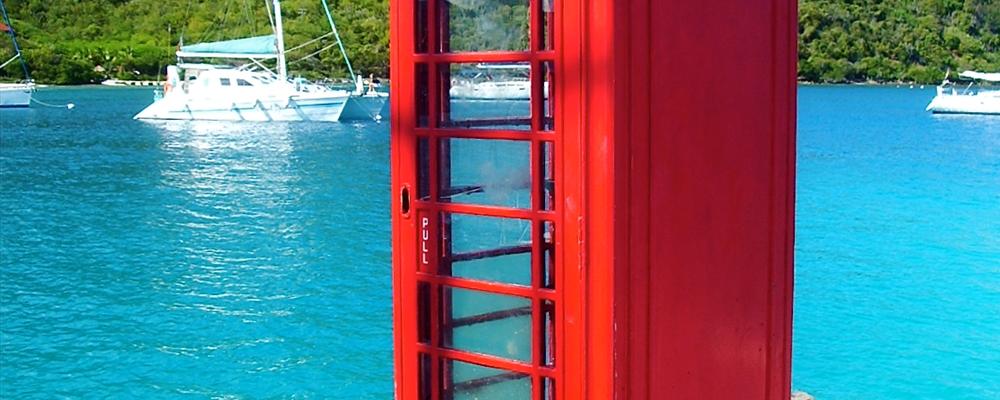
British Virgin Islands
( 1 user review )The British Virgin Islands are a self-governing British overseas territory, situated in the Caribbean just to the east of the US Virgin Islands.
The BVIs, as they are called, are a popular travel destination for sailors, fishermen (and women), sun worshipers, and other independent travelers, albeit not for the cost conscious.
Understand
Landscape
The British Virgin Islands comprise 16 inhabited and more than 43 uninhabited islands, including the island of Anegada. The islands fall into two types, with relatively flat coral islands and steep volcanic islands. The highest point is Crown Mountain.
Climate
Tropical, tempered by easterly trade winds, relatively low humidity, little seasonal temperature variation. Has experienced several hurricanes in recent years, although with little consequent damage, as well as floods, usually in October or November.
History
The islands were first settled by the Dutch in 1648 before being annexed in 1672 by the British.
Economy
The economy, one of the most stable and prosperous in the Caribbean, is closely tied to the larger and more populous US Virgin Islands to the west and indeed the US dollar is the legal currency within the British Virgin Islands. The islands are highly dependent on tourism, generating an estimated 45% of the national income, together with the offshore financial industry.
History
The islands were first settled by the Dutch in 1648 before being annexed in 1672 by the British.
Climate
Tropical, tempered by easterly trade winds, relatively low humidity, little seasonal temperature variation. Has experienced several hurricanes in recent years, although with little consequent damage, as well as floods, usually in October or November.
Getting there
Passport and visa regulations are enforced at harbors, especially for boats moving back and forth between the US and British territory. US customs will tell you a certified birth certificate is acceptable, but as of June 2009, ferry operators can only take passport carrying US citizens or face a CBP.GOV $3,000 fine. US CBP.GOV offices in St. Thomas.
By plane
Most international flights into the BVIs involve changing planes in San Juan, Puerto Rico since the Beef Island airport is not set up for large planes. Other flights from Europe involve changing planes in Antigua or other Caribbean Islands. Flights from the UK and mainland US often go to the US Virgin Islands and then require a fast boat transfer or, more usually, a 45 minute ferry boat ride.
By boat
Boats move freely between the BVI and the US Virgin Islands. A few cruise ships visit the major ports, but small vessels are more common.
The Tortola Ferry moves between Tortola and St. Thomas. In actuality, there is a group of several different ferry companies that provide service between the two islands. These ferries are what connects the people of the British Virgin Islands with the people of the U.S. Virgin Islands. The ferries link the city of Charlotte Amalie, St. Thomas with either Road Town or the West End of Tortola.
The ferry is one of the more popular ways to reach Tortola from the U.S. This is due to the fact that Americans can reach Tortola via only one direct flight and then a short ferry ride. This will no doubt save the traveler several hundred dollars, since a second flight would not be necessary.
You can catch one of the ferries, almost anytime of day. After 5:00 pm most of the services are shut down for the evening. The ride lasts about 50 minutes depending on the weather. The scenery is well worth the price of the ride.
Costs
-
One-way ranges from $25-$30 for adults, $19-$25 for children
-
Round-trip ranges from $45-$52 for adults, $30-$42 for children
Times
Vary greatly between companies. Some of the companies even alternate their schedules between themselves and another company. For a current list take a look at this page's ferry schedule .
Tips
Many travelers find it easier to just buy two one-way tickets from different companies instead of one round-trip ticket with the same company. Since ferries from different companies are coming and going constantly, you should be able to catch a ferry at any time during the day. Often times one company will be convenient upon arrival, but not upon departure. Just check the schedule to find out if this will be the case for you, if not then by all means, buy the round-trip ticket and save a few bucks.
Traveling around
By boat
A great way to see the islands is by boat. Sailboats and motorboats can be rented or chartered with a crew from any major harbor. The conditions for sailing and motoring depend on the time of year and anchoring off islands can be tricky, so either be sure you know what you are doing or hire a crew.
If you are an experienced sailor, it doesn't get any better than the BVI. Line of sight sailing in moderate trade winds, no currents to speak of, barely any tides, and few underwater obstructions other than the shore itself make sailing around the islands very relaxing.
Road Town, on Tortola, is one of the principal centres for bareboating (self-hire yacht chartering) in the Caribbean. It is the headquarters of Sunsail Sailing Vacations and Tortola Marine, located in the Road Reef Marina; Conch Charters , and The Moorings which are three of the main charter boat companies operating out of Road Town/Road Harbor. Ten minutes from Road Harbour is Nanny Cay Marina where you can find Horizon Yacht Charters and The Catamaran Company .
By car
Cars can be rented on the larger islands such as Virgin Gorda and Tortola, but are obviously unnecessary on many islands where goat paths and foot trails are the main mode of transportation. There is one scooter for rent on Jost Van Dyke.
See
Nature is the main attraction in the islands, with coral reefs, white sandy beaches, and scenic seaside villages the main draw.
Other attractions include historic villages, churches, and, if the sun is too much for you, a museum in Road Town, the shady Botanic Gardens or the rain forest on Sage Mountain in Tortola.
Things to do
-
Sail The Virgin Islands is the most popular area for a sailing vacation in the Caribbean. This is a first-timers paradise, since the islands are close together and well protected from the Atlantic. You wake up to sunshine and a blue sky, choose the cruising target of the day by pointing on a nearby island and set sail in a comfortable trade wind. There are many yacht charter companies and marinas in the British Virgin Islands.
-
Scuba diving
The BVIs are home to the wreck of 'The Rhone', which served as the site for the underwater scenes in the 1977 Nick Nolte/Jackie Bisset/Robert Shaw flick 'The Deep'. The Rhone is the best-known and most often visited dive site in the islands. Lying just west of Salt Island, the Rhone is a former Royal Mail Steamer that sank in a hurricane on October 29, 1867. A spectacularly large 310 ft (94 metres) steamer in her previous life, she's now a three-site dive, with each chunk resting at varying depths, from 20 to 80 ft (6 to 24 metres).
- Fishing
It is illegal for non-British Virgin Islanders to remove any marine organism from BVI waters without a recreational permit. A permit is available for charterers who intend to fish while in the BVI. The cost is $35 ($10 application fee; $25 for the permit). This TEMPORARY FISHING PERMIT can be obtained from the Department of Conservation and Fisheries: Department of Conservation and Fisheries, The Quastisky Building PO Box 3323 Road Town, Tortola. Tel: (284) 494-5681/3429 or (284) 468-3701 ex. 5555/1 Fax: (284) 494-2670 E-Mail: cfd@bvigovernment.org The government office closes early on Friday afternoons and doesn’t reopen until Monday morning. For charterers arriving on the weekend, it may be a couple of days before you can get a permit. When you arrive for your charter, check with the local staff for advice on obtaining a permit.
- Surfing
Several beaches offer surf-oriented breaks, including Josiah's and Apple Bay.
- Windsurfing
The annual "HiHo" windsurfing race-cum-travel-tour is held on or around the 4th of July weekend. For a week, internationally renowned competitors participate in formal course racing. Recognized as "One of the 100 top BVI adventures" by the BVI Tourist Board, the HiHo fleet is easily recognized by the distinctive event and sponsor flags flown by the charter fleet. The event generally stops for a day or two at Virgin Gorda, a night on Anegada, one or two nights around Tortola and finishes with a day of racing around the area of Sandy Cay, west of Jost van Dyke. Participants join in a fifteen-mile ocean dash from the waters around Necker or Gorda directly to Anegada. This event is unusual in that Anegada, a low-lying island, only becomes visible to someone at ocean-level during the last five miles of the race.
Eat
Inevitably, seafood is the dish of choice for most people. Lobster and various fish are available from the small restaurants. There are many restaurants throughout the islands varying from rotis and curries from Guyana and Trinidad to Italian, French and Asian.
The BVI is sponsoring an event titled "Taste the BVI" during the Annapolis Sailboat Show in Maryland, USA. Notable participating BVI chefs include: Ken Molyneaux, Imran Ashton, Henry Prince, and Neil Cline.
Drink
Rum, not surprisingly, is the drink of choice in the islands. Rum punch and other concoctions can be found at bars on the main beaches and roads. Most beaches do not have any refreshment stands so it would be wise to bring at least water. The "Pain Killer" is highly recommended, as is the Bushwacker. However, each bar has its own specialty drinks and rum punch in one bar may not be like rum punch in any other one. One drink to be careful with is the No-See-Um, a refreshing banana, coconut and pineapple long drink made with 151 proof rum.
There is plenty of Nightlife around Road Town, although only tourist places are advertised - ask a local for what is on where. Live local music is a feature of many restaurants and bars. The sunsets are spectacular, so a drink on the beach or in the mountains, watching the sunset and listening to local music before dinner can be a very pleasant vacation from the usual club-based entertainment of most mainlanders. Banana Keets Restaurant offers the best sunset of the BVI. Its terrace overlooks Sage Mountain and there is a swimming pool. It is possible to go there for happy hour. Expats tend to hang out in Road Town, at the Dove, le Cabanon, or Village Cay. These places are full on Fridays. Do not miss the Full Moon Party at Bomba Shack. This bar is famous for its walls where panties and bras are hanging, old licence plates are affixed to the walls as well as many other rubbish.
Sleep
If you're renting a boat, you already have your bed too, but for landlubbers, the larger islands offer resorts, budget bungalows, and a few things in between. To get off the beaten path you really will need to be seaworthy.
Buy
The main shopping area on Tortola is Wickham's Cay in Road Town. Main Street is a small, winding road leading from the Post Office to the Botanic Gardens. The shops on this road are housed in small, West Indian houses and often painted in bright colours, notably Serendipity Bookshop, perhaps the brightest of them all, which has a good collection of Caribbean history and cook books (and now has an internet cafe upstairs). Notable shops include Pussers, a small department store with a popular bar and restaurant, Sunny Caribbee selling spices and handmade items mostly from Haiti and the UK, and Latitude 18 which sells casual beach clothes. Next to the historic post office is Amethyst selling imported African and Indian items, Samarkand jewellery shop and across the road Kaunda's, where you can find Caribbean music.
Additionally, near the cruise ship dock is a branch of Columbian Emeralds jewellery store and opposite it, the Craft Market which despite its name sells mostly t-shirts and jewellery, clothes and other goods imported from Florida, Panama and St. Maarten. Island crafts genuinely made in the BVI are limited to crocheted items, straw hats, rum and guavaberry liqueur and can be found in the craft market. The vendors' market next to the cruise ship dock itself is mostly low-end t-shirts and tacky souvenirs - perhaps the only place in the BVI where bargaining is expected.
On the rest of the island there are a number of pharmacies, supermarkets, variety stores and jewellery shops. Shoprite in East End and OneMart in Purcell offer good variety of food at better prices than in Road Town although Bobby's supermarket in Road Town, Cane Garden Bay and Nanny Cay has good prices and is open till midnight 364 days a year (closed Good Friday). There is no need to find a speciality liquor outlet if you simply want a couple of bottles of wine, beer or rum as supermarket prices are excellent, rum is from $3 a bottle. If you are buying quantity or looking for speciality rums, Tico is an excellent store.
On Beef Island, near the airport, is the pretty Trellis Bay, this offers a selection of cafes, tourist shops and a very expensive supermarket. Do not look for bargains in this area! However, both the Loose Mongoose beach cafe and the Last Resort restaurant on its very own miniature island are worth trying.
Shopping on Anegada is limited to basic necessities plus two gift shops at the hotel and camp ground. Similarly, on Jost van Dyke there are a few gift shops but little else. Virgin Gorda has a supermarket in the marina and gift shops in the resorts.
Island hop to the US Virgin Islands and the rest of the Caribbean islands.
Contact & location
1 Review
Add your review
The photos displayed on this page are the property of one of the following authors:
betty x1138, heydrienne, Fairphotos, Latham Jenkins, lucianvenutian
Some photos courtesy of:
 . The photos provided by Flickr are under the copyright of their owners.
. The photos provided by Flickr are under the copyright of their owners.
This travel guide also includes text from Wikitravel articles, all available at  View full credits
View full credits
This travel guide also includes text from Wikipedia articles, all available at  View full credits
View full credits

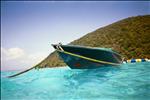
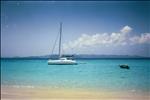
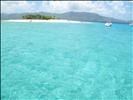
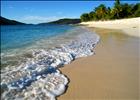






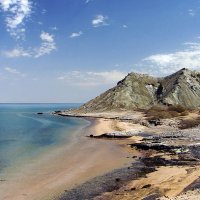


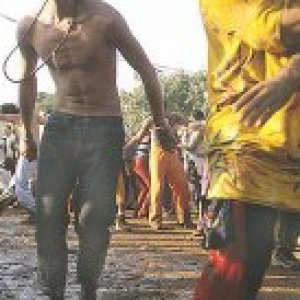

















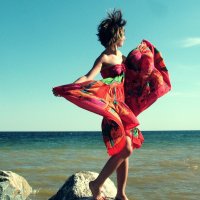




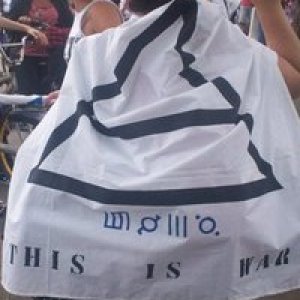
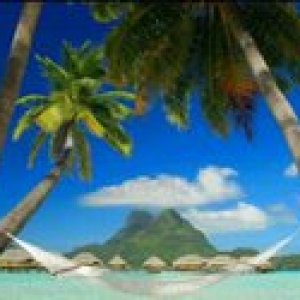



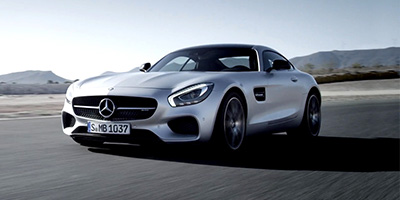













I liked
the place sounds beautifulI disliked
Nothing